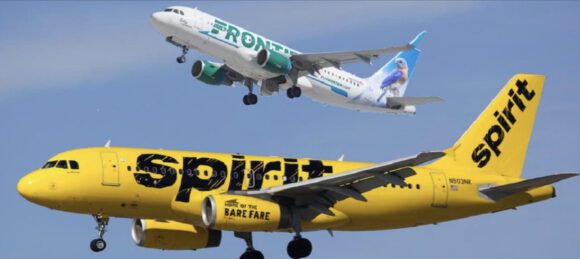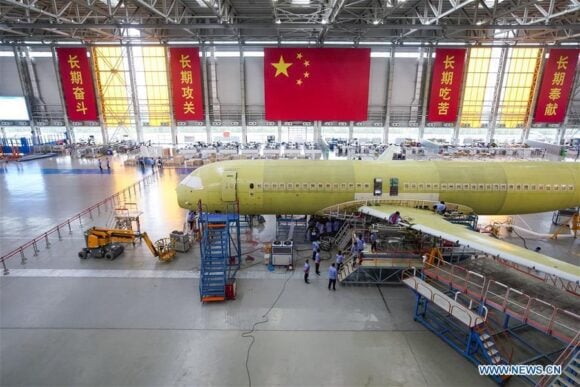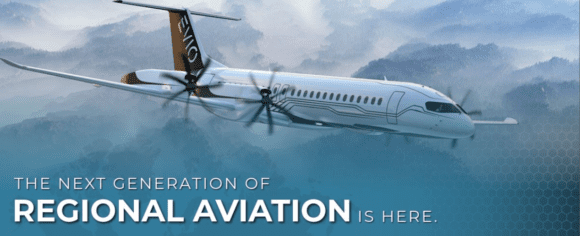
crystal ball 14781928157ne
The global pandemic is still impacting the airline and aviation industry, witness the continuing lockdowns in China and the slow recovery of airline traffic in Asia. We’ve analyzed data until our eyes are blurry, examined the data for emerging trends, and spoken to industry participants from the supply chain to OEMs to airlines to understand where things are going. While nobody knows with certainty where we are headed, we have discerned a number of changes in the post-pandemic era that will impact the industry. So here are some thoughts on the pandemic recovery and change.
When do we return to “normal?”
Recovery from the global pandemic is a patchwork quilt that ranges from near-full traffic recovery in the US to continued weak performance in China. The question people ask is when things will return to the pre-pandemic normal. Our answer is that things will never return back to what they were pre-pandemic. The more relevant question is when revenues and profitability might return to pre-pandemic levels, despite a number of changes that now appear permanent, rather than temporary.
Recovery in traffic and profitability is a jigsaw puzzle, as the pieces interact. The slowdown in China will impact the rest of the world for international flights, and full recovery may occur numerically in total while some routes continue to falter.
For the US, traffic and profit recovery will likely be the 3rd quarter of 2023; Europe, the 4th quarter of 2024; and China, the 1st quarter of 2026. A combination of higher interest rates and the potential for a global recession will likely weaken leisure demand, which has been leading the recovery. At the same time, business traffic faces a permanent change.
The state of the recovery is quite variable in terms of traffic and the mix of business and leisure customers. In the US, leisure customers have led the recovery, with business travel coming back more slowly and now about 80% of pre-pandemic levels, up from about 60% at year-end 2021. While US traffic is approaching 95% of pre-pandemic levels, business travel has lagged. While business traffic will eventually exceed pre-pandemic levels, it may take several more years for that to occur.
Demand patterns are changing
The reason business travel lags is the substitution of electronic communication, including desktop videoconferencing, replacing meetings that would formerly be held in person. But think about this – if you are a salesperson meeting once a month with your customer, and you replace one month a year, that is an 8% reduction in volume. Make it once a quarter, and it is 25%. We believe that the endpoint will be between those two points, with a decrease of about 15% in business traffic that won’t ever return. A lot of internal meetings will now be electronic, rather than in person. Business travel is now re-starting from a lower base than the 2019 levels, from which it won’t recover as quickly as leisure travel. You can Zoom a meeting, but you can’t Zoom a vacation.
That will also impact the overall global industry growth rate over the next two decades, reducing growth from the historic 5%-5.5% per annum levels to about 3.9% in our latest projections. The implications of a 1% difference in demand become quite significant when compounded over 20 years, with an 11% difference in total demand over the 20 year period. That translates to 11% fewer airplanes than if the industry continued to grow at historic levels for 20 years. This time is different because we have a technological alternative to travel, impacting demand. The pandemic taught us all how to use Zoom and that it is easier than getting on an airplane unless you have a strong reason to travel.
With a pilot shortage and a reduction in flight frequencies, particularly on regional routes in the US, the “day trip” in which a traveler can leave in the morning and return in the afternoon is dying out, as constraints, from TSA lines to airline schedules, make it more difficult to accomplish. The nature of business travel that remains is also changing, and demand patterns are evolving that may blur business and leisure travel. More business travelers are booking additional days for leisure travel that extend business trips by a couple of days to save money – providing a weekend stay for a lower airfare for the business and giving the employee some R&R – another demand change.
Large companies increasingly negotiate discount arrangements with airlines, and leisure travelers have lower fares, leaving small to mid-sized businesses facing higher business yields. While perhaps unintentional, the airlines are disproportionately impacting smaller businesses with higher fares, to some degree forcing change to the combined trip and the move to desktop videoconferencing.
The middle-of-the-market airplane is changing route planning
Route dispersion is also occurring at a higher rate because of the capabilities of narrow-body aircraft. This entails operating from smaller cities to smaller cities, bypassing major hubs and the need for much more expensive wide-body aircraft. Just compare the price per seat, and you will see why airlines, who like to be risk averse in a perishable commodity industry with high capital costs, would choose that alternative over wide-body models.
While the Boeing 757 has been out of production for many years, it began a trend of hub-bypass for key trans-Atlantic business routes given its 4,000 nautical miles plus range and strong runway performance enabling access to smaller airports. Airbus took advantage of this market with the A321 family, including the XL and XLR models. At the same time, Boeing abandoned the middle of the market segment, instead relying on the MAX, which lacks the range to effectively compete in those markets. As a result, Airbus has a 5:1 advantage in the middle of the market today, accounting for much of its market share advantage over Boeing. Boeing invented the middle of the market narrow-body segment – but foolishly failed to defend it.
ESG Concerns will impact near-term aircraft development
Think about the Boeing 737MAX. It is the latest version of a program that began life in 1967 and is now in its 55th year. Airbus and Boeing want their new programs to be successful and have a long life. But as we look at ESG concerns, particularly given “fossil fuel” propulsion systems, the question of how long a new program would last has a very different answer than it did 20 years ago.
Today, a new internal combustion program might have a useful run of 15 years, from an introduction in 2030 to perhaps 2045, by which time it is likely that electric replacements, either through hydrogen fuel cells or solid-state batteries and super-capacitors, would be ready to replace the existing technology. A 15 year production run is quite different than a 55 year production run. Therein lies the rub.
No moonshots?
Who in their right mind is going to invest in a multi-billion dollar program with the potential for a short production run and life. The economics aren’t really there, especially if a replacement technology is near. Even a 20 year run to 2050 doesn’t look the same, as the potential for derivative models at low cost to increase margins disappears. This is perhaps the real reason Boeing isn’t building the NMA – it is now too late to generate the historic returns and cash flows we’ve seen in the past.
Breakthrough please!
On the other side, achieving zero emissions will require a breakthrough, likely in both battery and hydrogen technologies from where we are today. There is a lot of R&D active and planned to achieve just that, and sorting through the promising claims to determine what is real, and what isn’t real, is the true challenge for the coming decade. We’ve already seen some “too good to be true” promises from technology innovators that are bound for failure. But some will succeed, and we will once again change the nature of the industry through innovation. If you figure out who the next Microsoft, Apple or Amazon will be for green technologies, please drop me a line so I can invest.
The fallback just in case
At the same time, there are things that can be done, even with combustion engines, such as lifting body aerodynamics and new engine technologies that could net us another 30% improvement in efficiency over today’s most efficient models, which are 50% better than first generation jets. Getting to 80% is a lot better than other industries that produce more carbon, and in the overall scheme of things, aviation has done well. But aviation is also highly visible, and a target for green protestors because, especially business aviation, as it is the domain of the elite.
But as we follow up with the use of Sustainable Aviation Fuel, the industry can drive to zero carbon by 2035 if we can increase SAF production and distribution. We are looking at an exciting future full of innovation and change in commercial aviation, driven by the race to get to carbon neutrality.
The net result will be that Boeing and Airbus will tweak their existing models with continuous improvement, but neither is likely to launch a new aircraft type until the answers to sustainability options are better developed and their feasibility proven. Airbus is pushing hydrogen with higher visibility than Boeing, likely because environmental issues are a higher priority in Europe than in the US. We aren’t expecting something new until about 2035, and then it might be a bigger change, perhaps a lifting body aircraft with rear mounted propulsion that could accommodate either combustion engines or electric motors.
The Bottom Line
- The future remains bright, even with a slightly lower 20 year growth rate for traffic
- We will still need to double our fleet, and this will happen during a period of dramatic technological change
- The nature of business travel will be impacted by communications and will evolve with the capabilities of new regional aircraft currently on the drawing board
- Conventional trunk line aircraft will continue to be built into the mid 2030s or longer, meaning that we will have combustion engines aircraft operating at least through 2060
- The industry will rely on SAF for carbon neutrality in the near term
- We’re in an exciting time of technological change that will impact the industry from multiple perspectives
Views: 13




